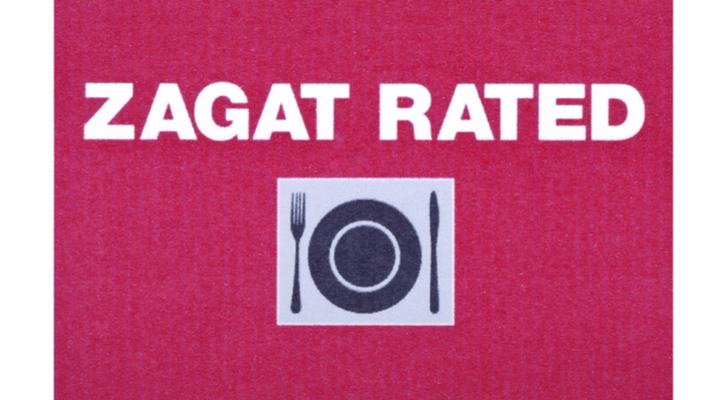On Monday, restaurant-review site The Infatuation agreed to buy Zagat from Alphabet Inc (NASDAQ:GOOGL) for an undisclosed amount. Zagat, once the standard for restaurant ratings and reviews, was purchased by Google in 2011 where it was mostly used to increase Google’s own local reviews data.
Then-Google executive Marissa Mayer originally saw Zagat as Google’s answer to Yelp, but when Mayer left to become CEO of Yahoo, Zagat fell by the wayside
Chris Stang, CEO of The Infatuation, intends to bring the brand back to its former glory and one of his plans is the return of printed guides.
The History of Zagat
Interestingly, when it comes to the older, established Zagat and new startup The Infatuation, the guide that’s been around since the 1980s is the pioneer in crowd-sourced reviewing.
The Infatuation employs a dedicated editorial review team that goes to restaurants personally and writes what Stang calls “situational reviews.” For example, a few headlines on the DC site as of this writing are: “The Best DC Restaurants For Your Birthday Dinner”, “10 Great Restaurants for Group Dinners” and “Where to Eat Near Capital One Arena.”
Meanwhile, Zagat began with lawyers Tim and Nina Zagat passing out surveys to their friends and compiling the results. Zagat spread to more cities and collected reviews and ratings from more and more volunteers. These ratings and reviews would be compiled and then human editors would create summaries and compile lists. All of this would be available in a skinny red guidebook.
This guidebook was seen as a general overview for all restaurants, based on the reviews from diners.
2018 was the first year this book was not printed. Instead, Google has moved the rating service entirely online and has done little to help it flourish there.
The Future for Zagat is a Return to the Past
There’s a reason that many restaurants still proudly display Zagat stickers on their front windows. The name long held weight for diners, and it likely still does. But right now, there’s little to distinguish it from any of the other restaurant review sites.
But no service has yet managed to replace Zagat. Yelp is a popular site, but the lack of editorial oversite makes it hard to know if you’re getting a review of the food or the reviewer’s stressful family dinner. And Yelp’s mobile site severely limits what users can see while out and about.
All the other popular review options have similar issues (detailed by Forbes).
Stang’s plans to keep Zagat and The Infatuation as separate brands moving forward. And they should remain separate; they provide different services.
Forbes contributor Bill Rosenblatt points out that people have proven through services like Spotify and online newspaper subscriptions that they are willing to pay for premium services. We live in the internet age, but not everyone expects for everything to be free.
A return to the printed guides would allow Zagat to capitalize on this willingness to pay and its highly regarded name. Plus, receiving a physical good in exchange for their money makes people more likely to pay.
A few years ago, it seemed like printed books were going away and fast, but the last few years have seen a rise in book sales overall — and a decrease in eBook sales.
The market still exists for printed books, and a more supported Zagat can fill the currently vacant slot for de-facto trusted restaurant ratings and reviews. So, against all 2018 logic, a return to print could possibly work.
As of this writing, Regina Borsellino held no positions in the aforementioned securities.

